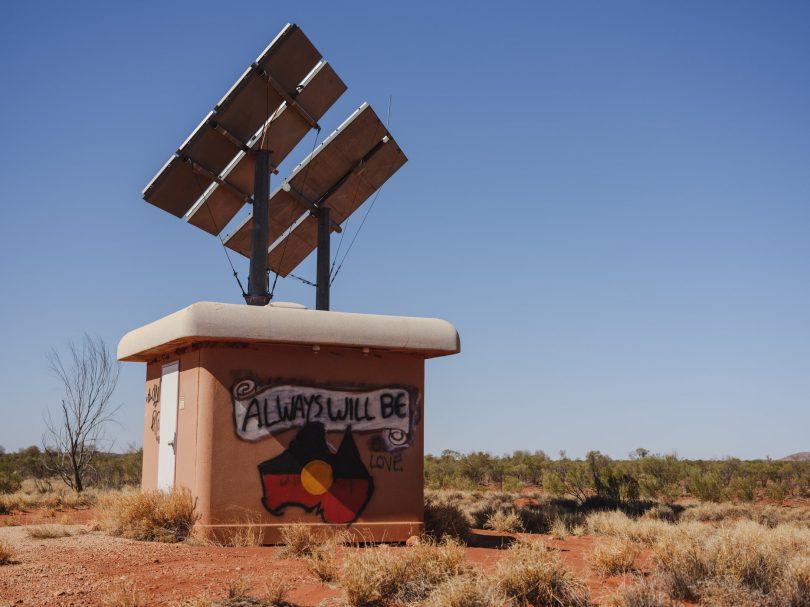Art Collector magazine journalist, Helen McKenzie, talks about Blak art.
Art journalism sits uncomfortably in today’s Aboriginal and Torres Strait art culture. Australia is generally missing non-colonial forms of critical art writing to review Indigenous art.
Art critics create necessary engaging analysis to develop and deepen the work of artists.
However, due to modernisation, art critics are faced with a new politic of identifying art by the traditional owners of the land.
Aligning an artist with a named community and identity can be seen as narrowly defining art with a level of ‘authenticity’.
As a result, urban-based Indigenous artists are put in a grey area, where they are indefinable.
Categorisation is necessary
Art Collector magazine journalist, Helen McKenzie, says it is important to distinguish between an Indigenous or non-Indigenous artist.

Helen McKenzie. By Matilda Lloyd.
McKenzie argues that analysing art today, she expects a visual response, with Aboriginal and Torres Strait art, she is asked for a lot more than that.
“Particularly for non-urban artists, it is difficult for language reasons,” McKenzie says.
With no common language, the writer limits their cultural understanding with the artist.
“The interpreted responses from [non-urban] artists are ‘I paint what I want to paint, this is my family, my country’,” McKenzie says.
In this politically correct climate, society expects art journalists to have superior knowledge of Aboriginal culture.
Pressure points, like stereotyping Aboriginality with deprivation can fuel discussion around art for a white Australian writer.
Further to this, The Journal of Heritage Tourism 2019 suggests that there is a colonial-centric research approach when studying Aboriginals.
This demonstrates colonialism and imperialism are imbedded in our education system and consequently, an educated white Australian’s psyche.
While there is debate around the categorisation of art being Indigenous, some Australian art collections choose to make no distinction between the two.
For example a 2007 exhibit at National Gallery of Australia displays an inclusive Indigenous Art Triennial.
This inclusivity advocates the legitimacy of all Aboriginal art forms.
A white controlled industry
Aboriginal artist, activist member, Richard Bell declared “Aboriginal art – It’s a white thing”.

Walk on (Bell’s Theorem). 2007. By Richard Bell.
White-run organisations are the mediators between remote Aboriginal artists and the fine art market.
Besides from governmental income, for remote Indigenous communities, art sales is their only profits.
Furthermore, A 2002 parliamentary enquiry found Aboriginal art contributes $100 to $300 million to national art sales.
While white institutions dominate Aboriginal art, without them, it is difficult to see the regional arts movement flourish.
Lack of Aboriginal academics
After winning the National Aboriginal and Torres Strait Islander art award, Richard Bell decried “key players in the art industry are not Aboriginal“.
“They are mostly white people, whose area of expertise is in anthropology and ‘Western Art’”.
In a later statement Richard Bell added “White people say what’s good. White people say what’s bad. White people buy it. White people sell it”.
The Australian Council of the Arts 2015 report indicated a higher number of Aboriginal people are required across all roles in the art sector.
And the Federal Government also recognised this flaw in the Indigenous arts industry.
Consequently, a 2012 government review aimed to increase completion rates for Aboriginal students in higher education.
Aboriginal art in Australia today is a white system driven by white values. Performance concerns the art, which sees a paradigm shift into a business environment.
As a result, critiquing Aboriginal and Torres Strait art is more appropriate from the lens of a traditional owner.
Featured image: Photograph Alessa Fracichiello. Taken from Upsplash.

